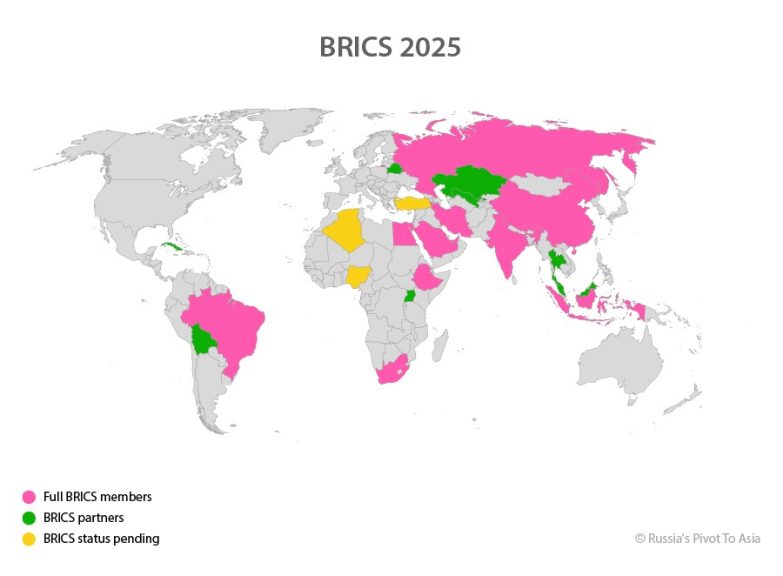Brazil will discuss a response to US President Donald Trump’s tariffs with other BRICS nations, Brazilian President Luiz Inacio Lula da Silva has stated. Lula said he will reach out to other BRICS nations and discuss how to tackle the tariffs. In addition, he said he would reach out to his Chinese and Indian counterparts, Xi Jinping and Narendra Modi, as well as other leaders.
In total, the BRICS has ten full members: Brazil, Russia, India, China and South Africa, along with Egypt, Ethiopia, Indonesia, Iran, and the UAE.
Earlier in the day, Trump announced that he would raise tariffs on India – another founding BRICS nation – to 50% by late August. Trump already placed 50% tariffs on Brazilian goods earlier this month, in a move that Brasilia condemned as an illegal attempt to politically influence its internal policy.
“I’m going to try to discuss with them about how each one is doing in this situation, what the implications are for each country, so we can make a decision” Lula said.
According to the Brazilian leader, Trump is trying to “dismantle multilateralism” and promote “unilateralism, where he negotiates one-on-one with other countries,” allowing the US to maintain “the advantage.”
US Tariff Rates On BRICS Countries
| Country | Rate |
| Brazil | 50% |
| Russia | 10% |
| India | 50% (from August 27) |
| China | 30% |
| South Africa | 30% |
| Egypt | 10% |
| Ethiopia | 10% |
| Indonesia | 19% |
| Iran | 10% |
| UAE | 10% |
(source: The White House)
“What bargaining power does a small Latin American country have against the United States? None,” Lula said. Brazil’s nominal GDP is US$2.2 billion. The United States is about US$30 trillion.

Trump has previously threatened BRICS members with additional 10% tariffs, accusing them of a concerted effort to sabotage the US dollar as the global reserve currency. BRICS nations have denied this and argued that Washington’s own foreign policy undermines the currency, by forcing countries to use their own currencies in international trade as Washington has weaponised the dollar.
The US president has also threatened to impose further tariffs on Russian trade partners – the biggest of which are BRICS partner nations – to pressure Moscow into accepting a ceasefire deal in the Ukraine conflict.
Washington could also place higher tariffs on China, currently the biggest purchaser of Russian oil, Trump said on Wednesday. Both Beijing and New Delhi have vowed to defend their sovereign interests in the face of US tariff hikes.
There has already been some intra-BRICS cooperation: South Africa has boosted its agricultural exports to other BRICS nations, China has fast tracked nearly 200 Brazilian applications to establish businesses in China, Indonesia is restructuring its seafood industry away from the US and towards BRICS, while Russia and India have also met to discuss strategy.
While in nominal GDP terms the BRICS ten are roughly at GDP parity with the United States, in Purchasing Power Parity (PPP) terms the BRICS economies are nearly three times larger.
Apart from economic superiority, the main advantages of the BRICS group is its sheer size – the ten BRICS full member nations possess about 46% of total global agricultural land and have a population of about 4 billion people. That stacks up against the United States with 13.7% of total global agricultural land and a population of 340 million. These figures suggest that the BRICS has the capacity to absorb a move away from the US markets.
We previously discussed the implications of the United States economic war upon the BRICS in some detail here.
Further Reading
Russia Proposes A Permanent BRICS Seat At The G20 As Global South Gains Influence: Analysis






